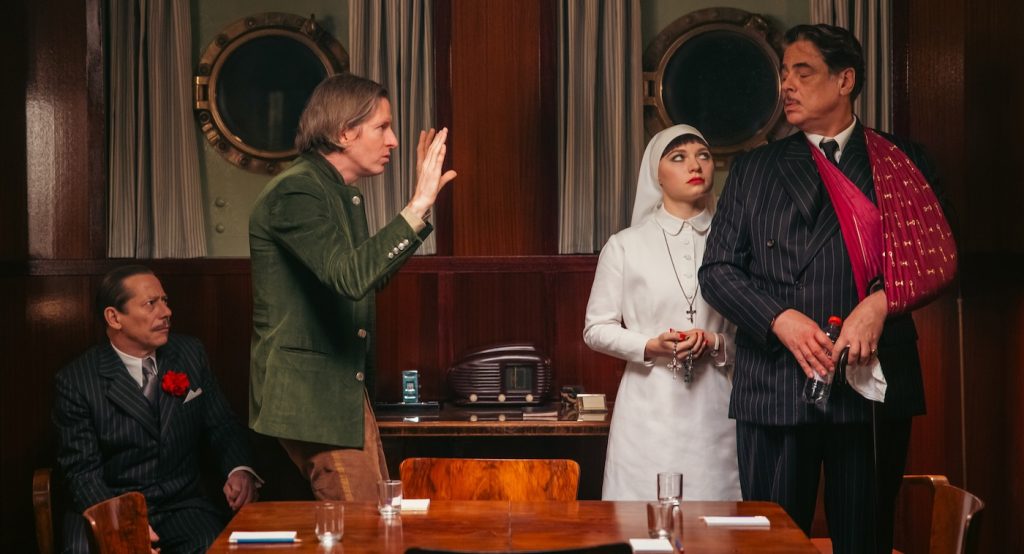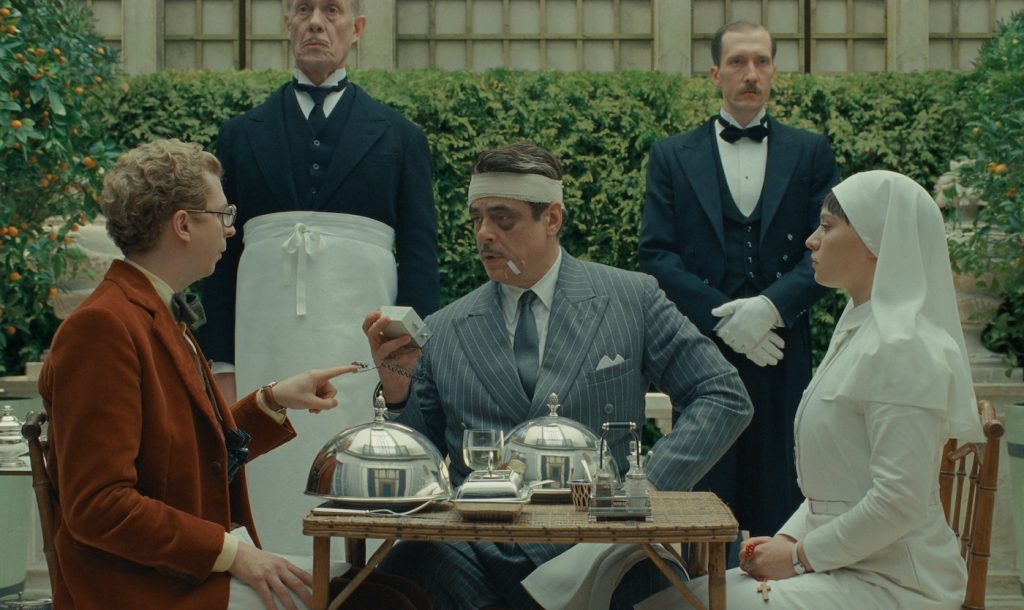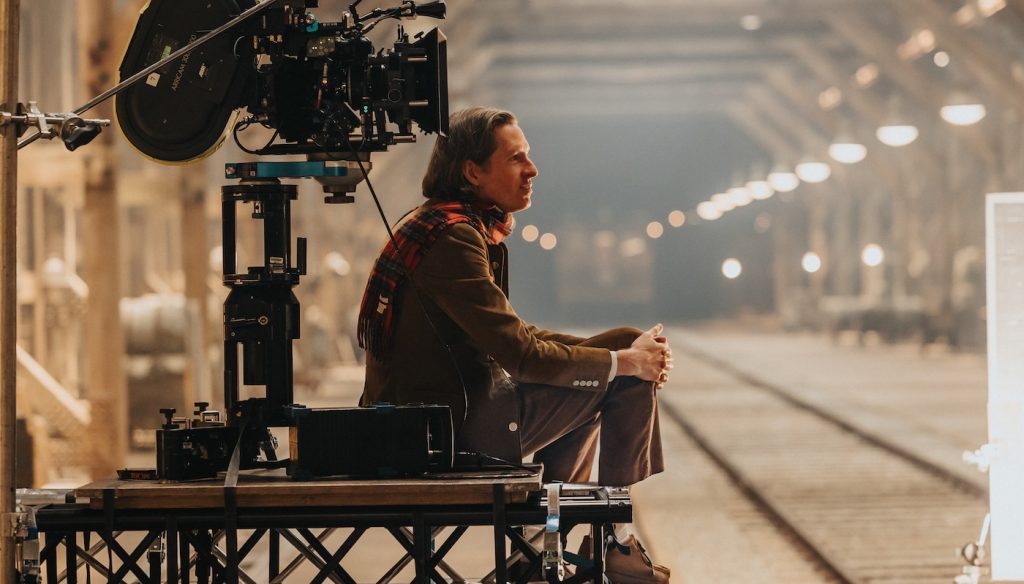Inside Wes Anderson’s Art Hunt: Curator Jasper Sharp on Securing Real Masterpieces for “The Phoenician Scheme”
Early on in The Phoenician Scheme, Benicio del Toro’s billionaire character Zsa Zsa Korda tells one of his nine sons, “Never buy good pictures. Buy masterpieces.” The line comes and goes in a flash, but Zsa Zsa’s not kidding, and neither was director Wes Anderson. So, Anderson and his team built out a palatial realm brimming with real paintings — not reproductions — created by the likes of legendary artists, including Renoir, Magritte, and dozens of other European Old Masters.
To wrangle the masterpieces, Anderson turned to Jasper Sharp, who runs the Kunsthistorisches Museum’s Modern and Contemporary art program in Vienna. Sharp got to know Anderson and his romantic partner, Juman Malouf, when they guest-curated a massive exhibition at the museum in 2018.
As the man in charge of the Very Important Paintings that took up temporary residence on The Phoenician Scheme soundstage in Potsdam, Germany, Sharp treated his VIP responsibilities with an eye toward enriching the film’s story. “All these paintings are either companions to certain episodes in the plot or they’re helping accelerate the audience’s process of understanding who these characters are,” Sharp says. “There are, if you like, little subliminal messages buried in each of the artworks.”
Speaking from his home in Vienna, Sharp details the Greta Garbo/Renoir connection and explains how he helped Wes Anderson build out the art-friendly realm dominated by billionaire extraordinaire Zsa Zsa Korda.
It’s fascinating but not terribly surprising that Wes Anderson, of all filmmakers, has an art curator on staff. Did he send you a script to bring you in on The Phoenician Scheme?
I never got a script; it was a voice note. A long voice note. When it’s a four-and-a-half-minute long, you get a pen and paper and start taking notes.
What did Wes say in his voice note?
He let me know that the lead character had to have an art collection, mentioned a couple of specific artists, and asked if I could find collectors or a museum to lend the art. And, oh by the way, we have three months. As someone who spends most of my life working in museums, we have at minimum 18 months lead time to even entertain the thought of getting someone to lend a piece of art, so my first thought was “This is amazing,” and then it was “I wish we had more time.” But I said to Wes, let’s just give it a go.
Wes Anderson is well known for being unusually particular in his choices. Did you have much leeway in selecting pieces of art for this movie?
I got a lot of direction from Wes and the production team to start the search, but there was also enough wiggle room for me to suggest things. In some cases, Wes was quite specific. For example, he requested a Renoir portrait of a child. We found Enfant Assis en Robe Bleue, a portrait of Renoir’s nephew, Edmund. Most people might assume it’s a girl, because of the long hair and the blue gown, but that was actually the fashion for a young, well-to-do boy in France at the time. Requests for more modern work started out as Cubist and then changed to Surrealist, which became René Magritte’s 1942 painting The Equator. And then there were requests for Old Masters paintings and sculpture.
Your connections within the European art world clearly came in handy.
I knew a couple in Berlin who have one of the preeminent collections of surrealism in Europe. I’d worked with them when I was at the Guggenheim in Venice 20 years ago, so I approached the widow [and her team] and they said, “We’ve never heard of Wes, but we find this really interesting.” I went through the catalog of their collection and sent Wes a bunch of images — Max Ernst, Dali, Picasso. We decided that Benicio del Toro’s enigmatic billionaire character Zsa Zsa Korda wouldn’t buy the obvious things. A Picasso or Dali might be owned by somebody who has pots of money but doesn’t think much, whereas Magritte is a little more sophisticated, and that suits Zsa Zsa’s intellect. There were a series of conversations like that which led to the selections.
With the movie being shot in Potsdam, Germany, geography also played a role, right?
Yes. We couldn’t get Wes’ favorite Renoir because it’s in Chicago, and it’s really expensive to move art around these days, between the insurance and everything. Our Renoir came from Geneva. All the Old Masters came from Hamburg in northern Germany. There was an element of pragmatism in finding things close to home, as we didn’t want to exceed the budget.
Was there a part of you that wondered, “Wes, why don’t you just get reproductions?” It would be so much easier.
Do you know that question never even crossed my mind! It’s not about whether the audience member sitting in a Seattle movie theater recognizes that this Renoir is original or not. It’s about what having an original painting on set does to the performances from the actors and actresses. When Liesel [Mia Threapleton] is in her bedroom with the Renoir painting and she’s woken by a flashlight in the face and told to get up and pack her suitcase, she’s wearing a nightgown designed by one of the world’s most exciting costume designers [Milena Canonero], which already changes how she behaves. She’s lying on a mattress, which is stuffed with horse hair, which no one sees but would have been found in a well-to-do home in Italy in the 1950s. And Liesel’s bed is covered with vintage French linen, which the production team sourced and sewed together to cover the mattress. Her rosary is designed by Cartier.

Did you get a chance to see the actors engaging with the art on set?
Yes, and it was fascinating. I watched the Renoir arrive, the last thing that came onto the set, so people were not walking around with booms and stuff. I noticed that during every break in filming, the actors moved toward the painting, wanting to spend time with it. Eventually, Wes introduced me to Benicio. He said the paintings brought a wonderful nervous energy to the set and asked me about the Renoir. I told him the Renoir had been owned by Greta Garbo, and for more than forty years, it hung in her apartment overlooking the East River. He was so excited that this was his picture, for two days, from the time they said “Action” to the time they said “Cut.” His reaction was enough to justify all the logistics, time, energy, and expense it took to get these artworks to the set so that these actors could be surrounded by incredible Old Masters.

Credit: Courtesy of TPS Productions/Focus Features © 2025 All Rights Reserved.
It’s like they have an aura.
And all the artworks in the film are basically signposts for aspects of the plot or his character. Nobody would buy a Renoir unless he had a streak of tenderness. Zsa Zsa seems incapable of displaying tenderness, but that painting is almost a trailer for something to come.
You first met Wes Anderson when he and his romantic partner guest-curated an exhibition in Vienna. Now, having collaborated as well on The Phoenician Scheme, what’s your takeaway about the experience of working with someone who has such specific ideas about what he wants?
There’ll be a moment of pause from Wes if somebody tells him, “That’s not possible.” He’ll continue to ask the question in a different way until it is possible. Wes might say, “Is this a hard no, is it a soft no, and why is it a no?” So, when Wes invited me to work on this film, I knew I’d learn something from him and this astonishingly quick, efficient, imaginative, and fun group of people. It’s kind of like a circus troupe that he’s gathered over the years. I now understand how Wes has been able to be so prolific with his filmmaking, because everyone is kind of dancing to the same drumbeat. You have to listen to the drum and tune yourself in and go with it.
It sounds like your creativity is stimulated rather than restrained by the fact that Wes Anderson is so clear about the story he wants to tell.
You get a script from Wes, and every full stop, comma, semi-colon, everything is carved in stone, but not in a way that feels like a straitjacket. It’s almost like seeing something being born as a fully grown adult. His thing is just there, developed and mature. In some cases, I suppose that could feel somewhat limiting, but with Wes, each project has an air of the impossible. That attracts people who like to do things that have never been done before. It’s all about upping the ante.

Featured image: Mia Threapleton stars as Liesl in director Wes Anderson’s THE PHOENICIAN SCHEME, a Focus Features release. Credit: Courtesy of TPS Productions/Focus Features © 2025 All Rights Reserved.



